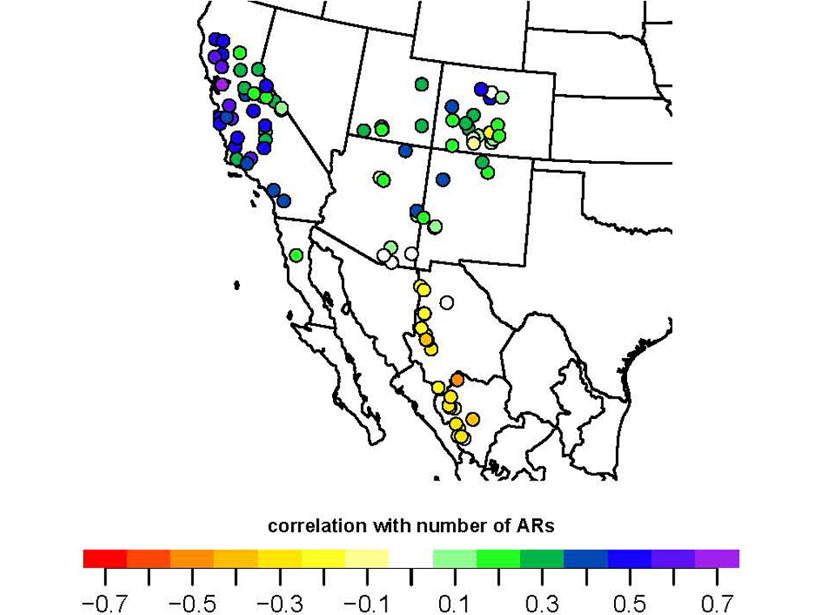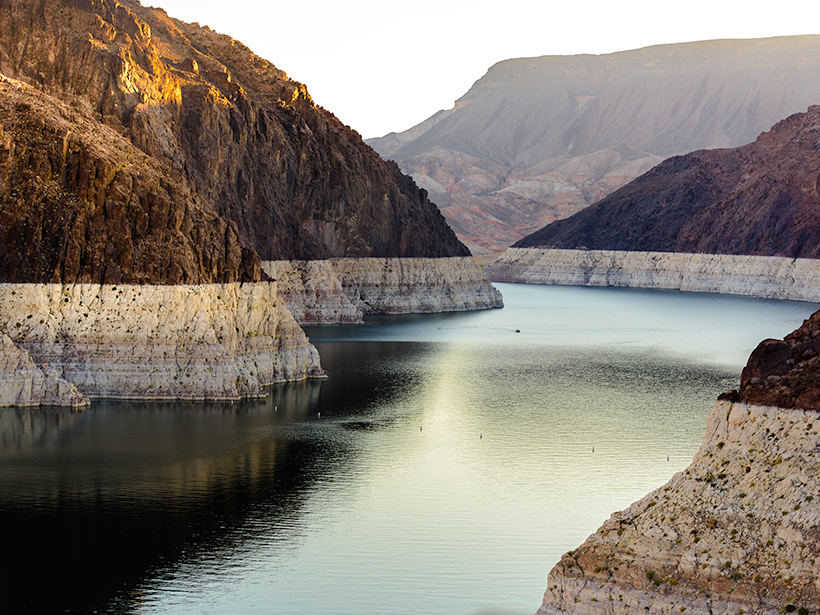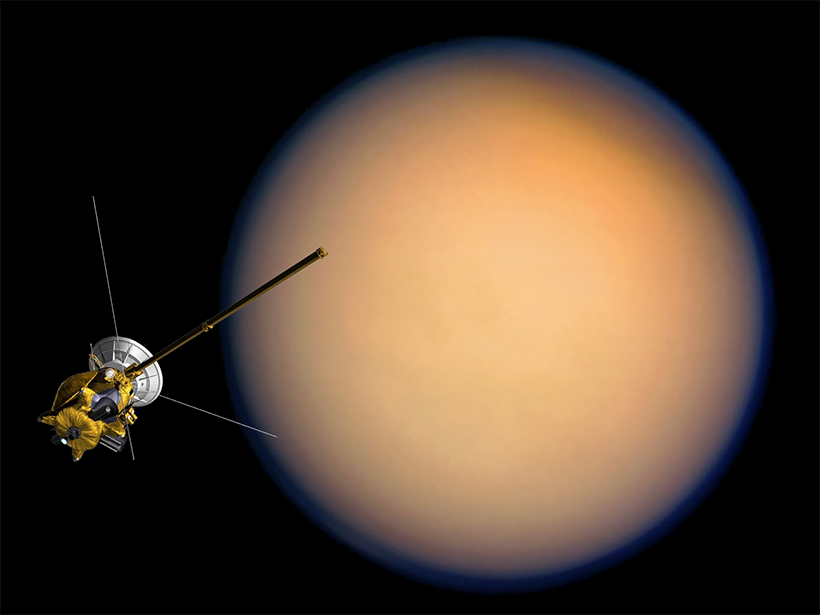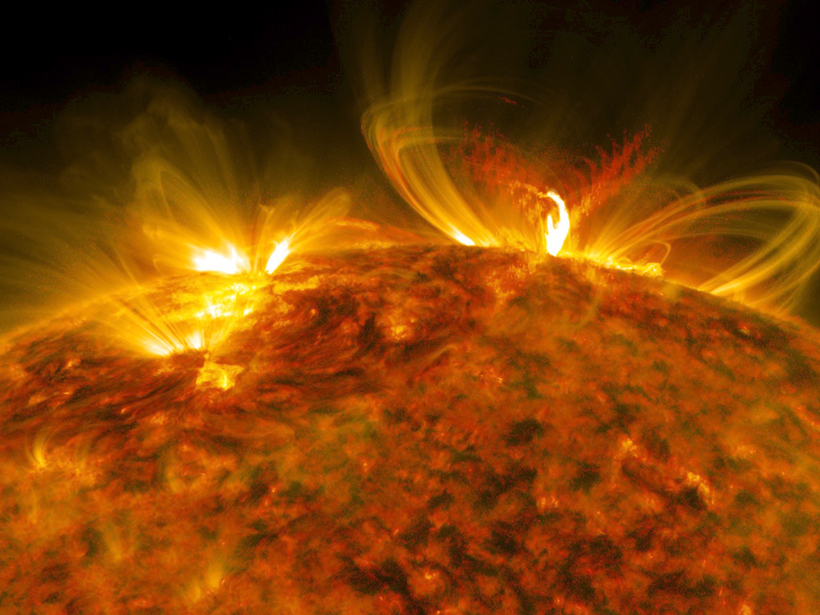A network of tree-ring chronologies has been used to develop the first reconstruction of atmospheric river landfalls on the US Pacific Coast over the last 500 years.
everything atmospheric
Evaluating the Accuracy of Seasonal Climate Predictions
An analysis of historical modeling outputs is improving our understanding of the relationships between different types of seasonal forecasting skills.
High-Energy Processes in Earth’s Atmosphere and Lightning
Thunderstorms and Elementary Particle Acceleration (TEPA-2017) Symposium; Nor Amberd, Armenia, 2–6 October 2017
Exploring the Interplay Between Ocean Eddies and the Atmosphere
Ocean Mesoscale Eddy Interactions with the Atmosphere: A CLIVAR Workshop; Portland, Oregon, 17–18 February 2018
Peering Through Titan’s Haze to Better Understand Its Surface
Variations in grain size and water ice content detected on Saturn’s largest moon offer evidence of geologically related units that resemble the mountain-to-desert transition on Earth.
Solar Flare Caused Increased Oxygen Loss from Mars’s Atmosphere
Measurements by a Mars-orbiting spacecraft indicated heating and chemistry changes in the planet’s atmosphere following an extreme solar eruption last year.
Tides and Waves Interact to Cause Hurricanes in Near-Space
The interaction of tides and waves generated in the lower atmosphere can cause the mean zonal wind speed in the lower ionosphere to oscillate equivalent to a category 1 hurricane at Earth’s surface.
NOAA Seeks Emerging Technologies to Further Its Mission
National Oceanic and Atmospheric Administration Emerging Technologies for Observations Workshop; College Park, Maryland, 22–23 August 2017
A Better Way to Predict the Indian Monsoon
A new study finds that including Himalayan topography and land-atmosphere interactions improves climate models.
Toward More Realistic Modeling of the Mesosphere
New study reveals complex behavior of gravity waves in the atmosphere.










